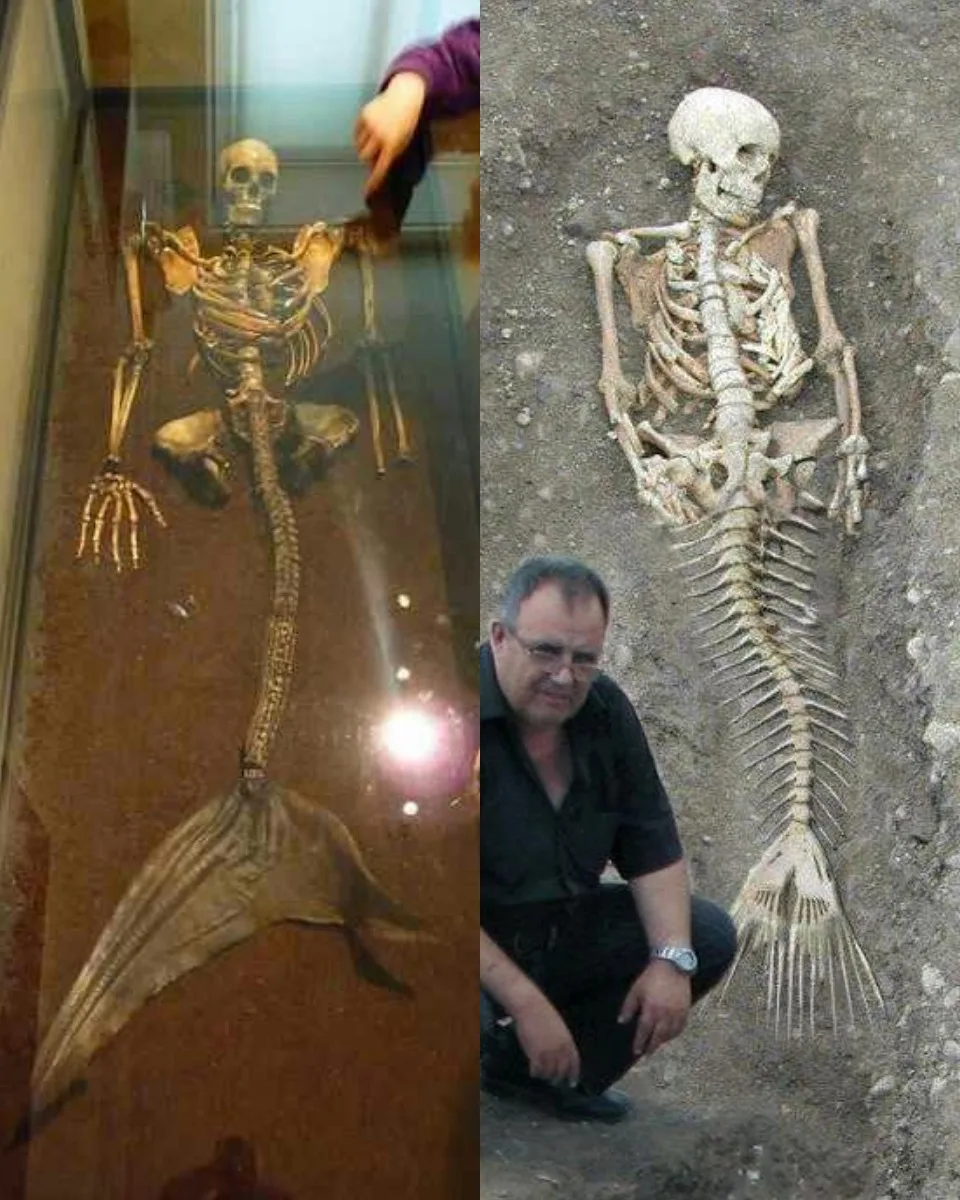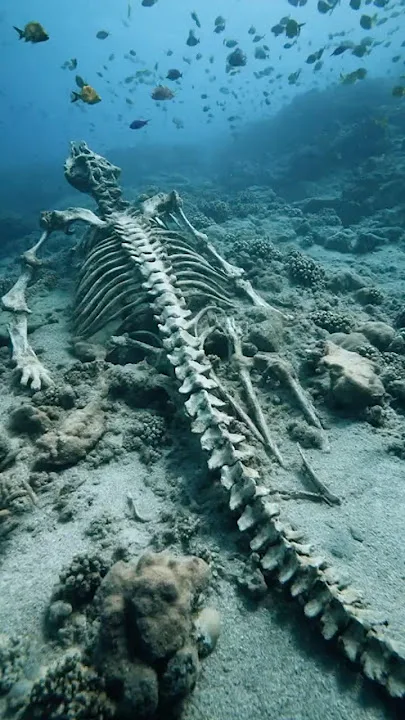In a remote coastal tide pool, an eerie discovery has reignited one of humanity’s oldest and most haunting legends — the mermaid. Beneath layers of salt and sediment, explorers stumbled upon what appears to be a skeletal form unlike any known creature: part human, part aquatic. Fused ribs curve into fin-like structures, and delicate finger bones stretch into what could only be described as webbing — a biological riddle lost between worlds.

Scientists, predictably, have called for “further verification.” Yet whispers from the dig site tell another story — one of quiet removal, sealed reports, and samples that vanished before reaching public labs. Why do these findings always fade from view? Are they too threatening to accepted science, or do they expose a truth long buried beneath the waves?

Ancient maritime scripts from Greece to Japan spoke of “sea maidens” who guarded forbidden knowledge — beings caught between divinity and nature. Some historians now suspect these weren’t mere myths but distorted memories of an ancient, aquatic lineage humanity has chosen to forget.

As tides rise and history erodes, perhaps what we dismiss as legend is simply a truth submerged — waiting for those brave enough to dive deeper. The bones may be silent, but their presence asks a question older than civilization itself:
Were mermaids ever real — or were they erased from history?





